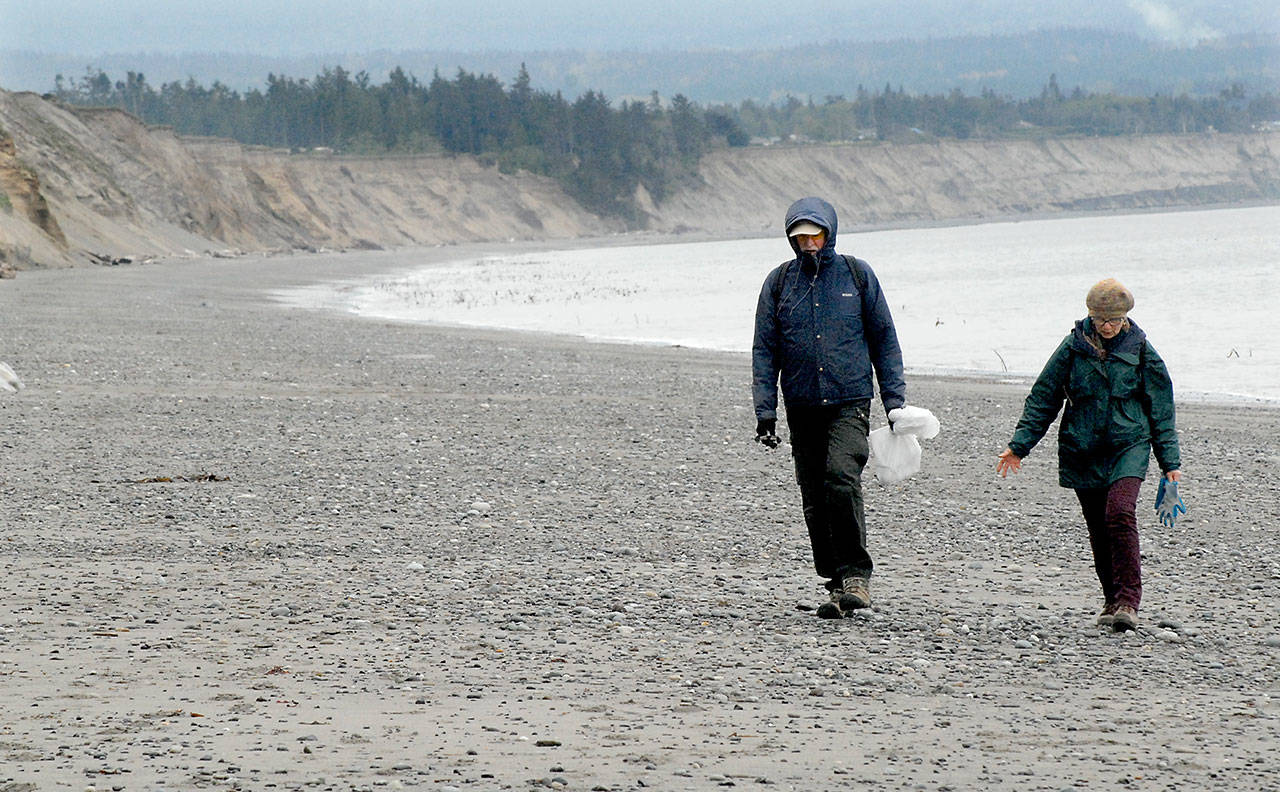The results are in after 1,330 volunteers cleaned debris from more than 60 Washington beaches during the 10th annual Washington Coast Cleanup.
Jon Schmidt, Washington CoastSavers coordinator, estimated that volunteers hauled away about 15 tons of garbage during the cleanup of beaches on the Pacific Coast from the Columbia River to Cape Flattery and on the Strait of Juan de Fuca from Cape Flattery to Port Townsend.
It’s not quite as much as the 20 tons volunteers found last year, but it’s still too much, said Schmidt, who lives in Sequim.
“Lots of water bottles were found on many of the beaches,” Schmidt said in an email. “Good reminder to us all to try and avoid disposable plastic products. We use them for mere minutes but they last forever.”
Schmidt said that the Port Townsend area had 128 volunteers, more than double last year.
The 126 volunteers who cleaned the beaches around Neah Bay — including Hobuck, Sooes and Shi Shi beaches — collected over a ton of trash, as did the 73 volunteers who cleaned the beaches around Ozette. he said.
Every April for a decade, Washington CoastSavers, its partners and volunteers have gathered plastics and other trash hurled onto beaches by storms and packed it out and into garbage bins.
Usually, the organized cleanup is on the Saturday closest to Earth Day, but high tides that day prompted the delay of the cleanup to a week later.
Schmidt said that during the cleanup this year one group planned to clean Second Beach, but since more than enough volunteers already had signed up for that beach, he asked the group, which had participated in cleanups for about 18 years, to focus on tires that he knew had been on the beach for years.
“They were super excited to do that,” he said. “They are tough to get out because they are usually buried in the sand and have logs on top of them.”
While the cleanup is only 10 years old, it has its roots in cleanups that started about 18 years ago, he said.
Schmidt and his family of four trekked to Hole-in-the-Wall at Rialto Beach and collected four full bags of marine debris.
They found enough water and beverage bottles to fill two bags alone, with Styrofoam, plastic, rope and fishing line filling the rest, he said.
“Fortunately when walking on many of our local beaches you don’t see the trash until you start looking closely under the driftwood or in the grasses,” he said. “Then you see the scale of the issue.”
Other volunteers searched Washington beaches farther south along the Pacific coast.
“It’s a statewide effort,” Schmidt said.
Those who helped out enjoyed free camping in Olympic National Park over the weekend and could participate in a number of barbecues across the coast.
Schmidt said the amount of trash that is found each year is enough to change his buying habits.
He doesn’t like to buy bottle water and avoids putting takeout food in Styrofoam containers, he said.
“It’s the little changes we can make,” he said.
Schmidt said he’s often asked about the strangest debris that was found during the cleanups. After years of cleanups he doesn’t find anything strange, he said.
“It’s all just plastic junk,” he said. “After awhile it’s not strange, it’s just pollution.”
The next coast-wide cleanup will be in September for the International Coastal Cleanup, when thousands of people in dozens of countries will clean their coasts.
“Marine debris is an international issue,” Schmidt said. “The ocean connects us all.”
For more information or to donate to CoastSavers, visit www.coastsavers.org.
________
Reporter Jesse Major can be reached at 360-452-2345, ext. 56250, or at jmajor@peninsuladailynews.com.



